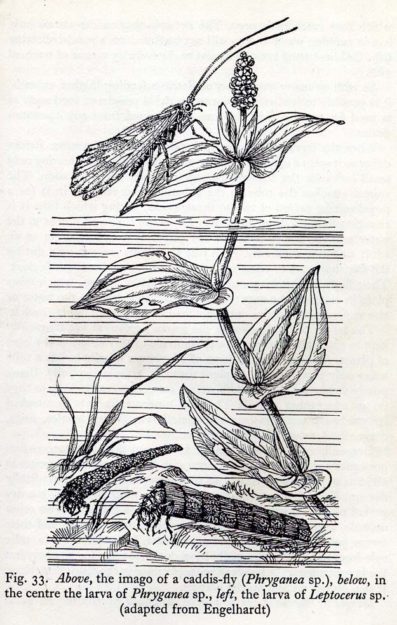Horst Janus, Pond Life in the Aquarium, Londres, Studio Vista, 1966, p. 38.

They construct for themselves quiver-like tubes, in which they protect the soft hind part of the body. When in danger they can withdraw the whole of the body into the tube. They drag this tube around with them throughout their larval life and never leave it voluntatily, even when moulting. They can be induced to leave it by inserting the head of a pin into the tube. If the larva is then given material of the type usued in its original tube, it will start to build a new tubes and the proces can be watched if the animal is kept in a glass-sided tank…/…
Species which live principally in running water build with heavy materials, such as sand-grains, small stones or small empty molluscs shells. The caddis-worms of standing waters use plants material, such as tiny pieces of twigs and reeds, pine-needles and grass stems. So the different species of caddis larvae produce very different kinds of tubes, although members of the same species tend to build in more or less the same way.